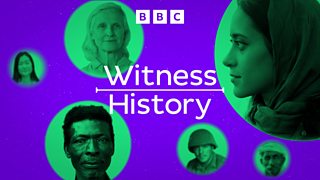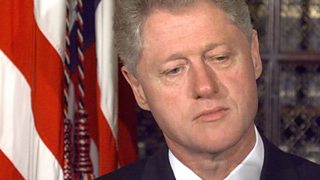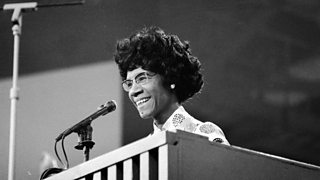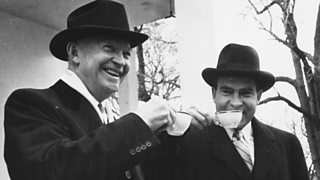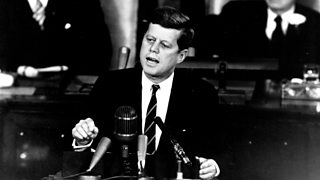Five landmark moments in US presidential history
With the US election looming, Witness History has been looking back at some of the most important moments in America’s presidential history.
From President Nixon's resignation to the first televised debate, here are just five landmark days which changed the course of history.
Witness History is history as remembered by the people who were there.
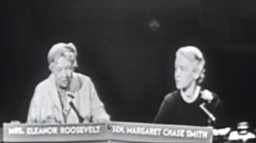
In 1956, the two largest US parties agreed to participate for the first time in a televised debate ahead of the presidential elections. But instead of incumbent President Dwight D Eisenhower and his Democratic opponent Adlai Stevenson, the audience watched two female representatives defending their candidates.
Former first lady Eleanor Roosevelt and Senator Margaret Chase Smith took the stage to represent the Democratic and Republican candidates. It was a 30-minute format in which speakers focused on international affairs and civil rights. A panel of journalists asked questions and both women were allowed to offer a final statement, setting the path for future debates.
Historians Kate Scott and Janann Sherman tell Stefania Gozzer how the event took place.
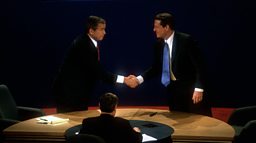
The 2000 election was one of the closest and most contested in history.
It was more than a month before the result was decided after a Supreme Court decision. It all came down to the vote in Florida, where irregularities and technical problems added to the confusion.
In the end it's thought there were just a few hundred votes in it but the result still divides opinion.
Callie Shell was the official photographer for Al Gore's presidential campaign and documented the dramatic events behind closed doors in pictures. She tells Rebecca Kesby what it was like to be there.

On 8 August 1974, Richard Nixon became the first US president in history to resign from office, following the Watergate scandal.
This scandal began with a break-in at the Democratic National Committee headquarters at the Watergate office complex in 1972, which was linked to Nixon’s re-election campaign.
The release of tapes from within the White House, dubbed the Nixon Tapes, revealed Nixon’s involvement in the cover-up, leading to a loss of political support and impending impeachment proceedings.
Farhana Haider spoke to journalist Tom DeFrank, who watched the drama unfold minute by minute.
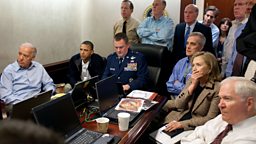
Pete Souza was Chief Official White House Photographer during Barack Obama's presidency.
His photo from when Bin Laden was killed by US soldiers in 2011 has become one of his most famous.
He tells Uma Doraiswamy what that day was like leading up to the moment when he took the picture.
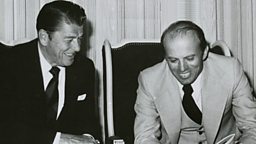
In June 1979 the Moral Majority was launched and changed the course of American politics.
It was set up to promote family values by religious conservatives from Catholic, Jewish and evangelical Christian communities.
It urged protestants in particular to go against the tradition of separating politics and religion and register to vote, and to vote Republican.
Richard Viguerie was one of the driving forces behind the movement. He spoke to Claire Bowes.
More presidential stories from Witness History
-
![]()
The Impeachment of Bill Clinton
The Senate chamber was turned into a court to put the president on trial in January 1999.
-
![]()
Black Congresswoman Shirley Chisholm
In January 1972 Shirley Chisholm became the first major-party black candidate to make a bid for the US Presidency.
-
![]()
Eisenhower's Farewell Address
The farewell address in January 1961 is regarded as one of the greatest speeches made by a US president.
-
![]()
When JFK won the US presidency
The US election of 1960 was a close race between John F Kennedy and Richard Nixon.
